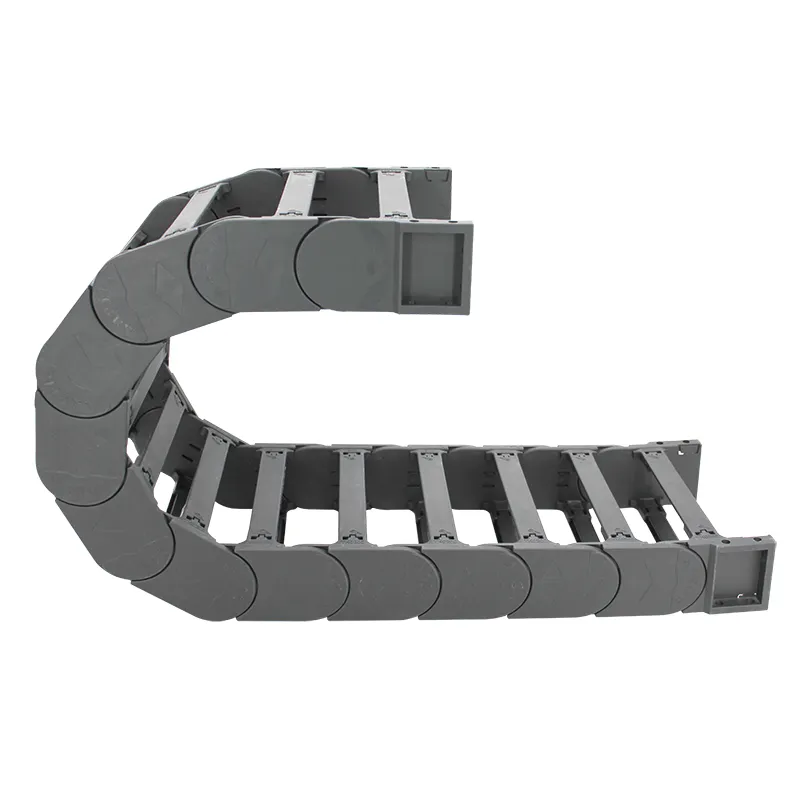cable track system
Understanding the Cable Track System A Comprehensive Guide
In today's fast-paced and technologically advanced environment, efficient management of cables is more critical than ever. Businesses in various industries are constantly seeking ways to streamline operations and enhance safety. One such solution designed to address these challenges is the cable track system. This article delves into what a cable track system is, its components, benefits, and applications.
What is a Cable Track System?
A cable track system, often referred to as a cable carrier or drag chain, is an innovative solution that helps organize and protect cables and hoses while allowing for their movement. This system consists of a series of interconnected links that create a conduit through which cables can travel freely. These tracks are typically installed in environments where machinery or equipment experiences significant motion, such as conveyor systems, robotic arms, and heavy machinery.
Components of a Cable Track System
A cable track system comprises several essential components
1. Cable Carrier The primary structure that houses the cables. It is designed to protect the cables from wear and tear while permitting flexible movement. 2. Mounting Brackets These brackets secure the cable carrier to the equipment, ensuring stability and preventing unwanted movement during operation. 3. Cables and Hoses The actual electrical wires or hydraulic hoses that will run through the cable track. These are selected based on the specific power, control, and data needs of the machinery. 4. Guide Channels In some setups, guide channels facilitate smooth cable movement and prevent entanglement, acting as a rail for the cable carrier to glide along.
5. Accessories Various additional components, such as connectors and protective wraps, may be included to further enhance the functionality and longevity of the system.
Benefits of Using a Cable Track System
Implementing a cable track system offers numerous advantages
cable track system

1. Organization Cable track systems provide a structured environment for managing cables, helping to prevent tangling and confusion. This organization not only enhances aesthetics but also enables easier troubleshooting and maintenance.
2. Protection By enclosing cables within a protective carrier, the system safeguards them from external damage, such as abrasion or crushing. This prolongs the lifespan of the cables and reduces the likelihood of costly repairs or replacements.
3. Safety Well-managed cables reduce the risk of trips, falls, and electrical hazards within a workspace. Employees can move freely and safely, which is a paramount concern in any industrial setting.
4. Efficiency A well-designed cable track system allows for seamless movement of cables, facilitating smoother operations in machinery. This increase in efficiency can lead to improved productivity levels.
5. Versatility Cable track systems can be customized to fit various application needs. They come in different sizes, materials, and configurations, making them suitable for a broad range of industries, from manufacturing to entertainment.
Applications of Cable Track Systems
Cable track systems are widely utilized in various sectors
- Manufacturing In production lines where machinery operates continuously, these systems help manage the extensive network of cables necessary for powering equipment and relaying data. - Robotics In robotic applications, cable track systems are essential for ensuring that cables do not obstruct movement, maintaining functionality and performance. - Automotive Cable carriers are often used in assembly lines to streamline the production process, ensuring power and data supply without compromising safety. - Entertainment In theaters or concert venues, cable track systems support lighting and sound equipment, allowing smooth and layered performances.
Conclusion
In conclusion, the cable track system is an indispensable solution for industries looking to enhance cable management, improve safety, and optimize efficiency. As workplaces evolve and technology advances, such systems will likely play an increasingly vital role in maintaining smooth operational flow and safeguarding employees and equipment. Embracing this technology can lead to significant advancements in productivity and safety, ultimately resulting in a more robust and efficient work environment.








